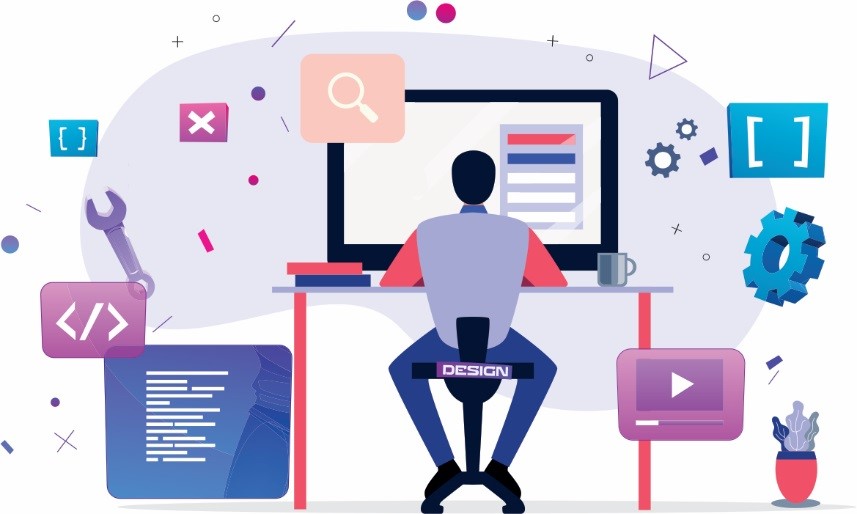Discovering the Suitable Software Development Partner for Innovative Solutions
Wiki Article
Committed Developers vs. In-House Teams: Which Is Right for You?
The decision in between utilizing committed developers and maintaining an internal group is a substantial one that can affect the trajectory of your projects and overall service approach. Committed designers supply a level of flexibility and customized competence that can be helpful for certain, temporary campaigns. Alternatively, internal groups add to a cohesive business culture and a nuanced understanding of long-term objectives. By examining critical factors such as budget, project extent, and preferred control, you can much better figure out which technique lines up with your business demands. The implications of this selection prolong beyond immediate end results-- consider the more comprehensive impact on your business landscape.Understanding Committed Programmers
The growing need for specialized skills in the technology market has actually led to the appearance of specialized developers as a feasible option for numerous companies. These professionals are usually contracted on a job basis, allowing companies to utilize particular proficiency without the long-lasting commitment related to full time hires. Devoted programmers are commonly embedded within a client's team, giving flexibility and scalability to satisfy task requirements.This model enables companies to access an international skill pool, which is specifically beneficial in a quickly developing technical landscape. Committed developers can be sourced from different geographical places, guaranteeing that firms can discover the ideal capability at affordable prices. They typically bring a riches of experience and expertise, having functioned on diverse tasks throughout various industries.
Additionally, committed programmers can concentrate exclusively on the jobs available, improving efficiency and performance. They are equipped to integrate seamlessly into existing workflows, collaborating closely with in-house teams to attain task objectives. This approach not just minimizes the worry of employment and training however likewise allows companies to continue to be nimble, adapting swiftly to transforming market needs and technical innovations.
Benefits of In-House Teams

Furthermore, internal groups tend to have a much deeper understanding of the firm's mission, values, and objectives. This positioning can boost staff member interaction and inspiration, as staff member really feel much more attached to their job and the organization's success. Furthermore, having a dedicated in-house team enables far better alignment of techniques and goals, as these members are constantly concentrated on the company's priorities.
In-house groups additionally promote quicker decision-making processes, as they can respond extra swiftly to changes and challenges. The recognized relationships and experience with firm protocols allow for streamlined workflows and decreased miscommunication. Eventually, the mix of a natural culture, placement with business objectives, and effective communication makes internal groups a useful asset for many organizations, especially those looking to grow lasting growth and technology.
Expense Factors To Consider
When evaluating expense considerations, both dedicated developers and in-house groups present unique financial implications for organizations. Involving devoted developers commonly includes a pay-per-project or per hour rate design, which can be cost-efficient for organizations with changing job demands. This strategy enables for flexibility in scaling resources up or down, making sure that business just spend for the solutions they need.On the other hand, internal teams involve dealt with expenses, consisting of incomes, advantages, and overhead expenses such as office and devices. While this model provides higher control and immediate schedule of sources, it might cause greater lasting expenditures, especially if the work does not warrant a permanent team.
In addition, firms must take into consideration the concealed expenses related to recruitment and training of in-house workers, which can even more dedicated development team stress budget plans. Sometimes, the moment and resources invested on taking care of an internal group can diminish the organization's core company objectives.

Task Management and Versatility
Task management and flexibility are critical elements that influence the selection between dedicated programmers and in-house groups. Dedicated developers normally offer a high level of flexibility, allowing companies to scale resources up or down based upon job needs. This agility can be specifically beneficial for organizations experiencing fluctuating workloads or those seeking to innovate quickly. Dedicated groups typically have established procedures for managing tasks effectively, leveraging particular approaches like Agile or Scrum, which promote iterative progress and adaptability.
Eventually, the choice between internal teams and specialized developers rests on the desired degree of flexibility and the certain project management needs. Companies need to review their operational characteristics, job intricacy, and resource availability to determine which choice straightens ideal with their calculated purposes.
Making the Right Selection
Choosing the best advancement approach-- specialized designers or internal groups-- calls for a mindful analysis of various aspects that straighten with a firm's strategic goals. Conversely, internal groups can offer much better connection and assimilation with existing employees.Following, evaluate your budget plan. Devoted designers usually offer an affordable option for temporary jobs, while in-house teams might sustain higher long-lasting expenses due to salaries, benefits, and expenses prices. Examine the degree of control and cooperation wanted; in-house teams normally promote more powerful communication and alignment with company culture.
Additionally, take into consideration the moment structure. If prompt outcomes are required, devoted developers can be onboarded rapidly, whereas building an internal team takes time for recruitment and training. Weigh the long-term vision of your company. If constant development is essential, purchasing an in-house group might produce far better returns gradually. Ultimately, the decision rests on an extensive analysis of these variables, making sure positioning with your business's general purposes and operational demands.
Conclusion
In verdict, the decision between internal groups and devoted developers hinges on project requirements and business purposes. On the other hand, in-house teams grow a natural culture and much deeper placement with lasting goals.The choice in between utilizing devoted developers and keeping an in-house group is a considerable one that can impact the trajectory of your projects and total service technique.Task monitoring and versatility are critical variables that affect the selection in between internal teams and committed designers. nearshore software development.In comparison, internal groups may stand out in maintaining a regular project monitoring framework due to their knowledge with the organization's society and long-term objectives. Dedicated designers commonly present an affordable service for short-term jobs, while internal groups might incur higher long-term costs due to salaries, benefits, and overhead expenses.In verdict, the choice between devoted designers and internal groups pivots on project demands and business goals
Report this wiki page